Day 1 – Ancient Rome
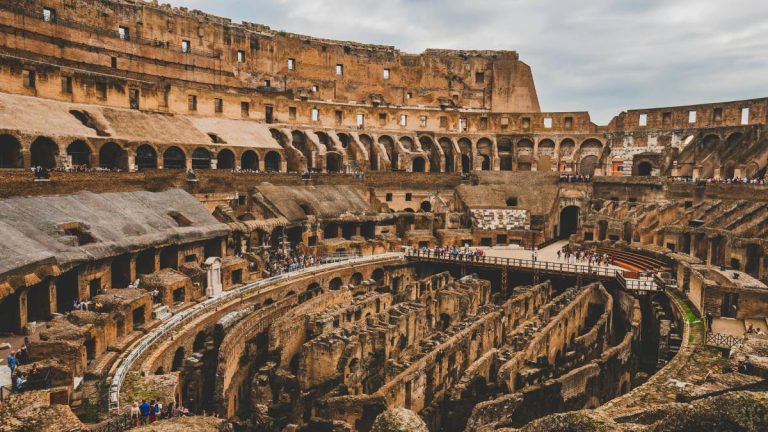
Colosseum
The Colosseum is the most iconic symbol of Rome and one of the greatest ancient amphitheaters in the world. Built in 70–80 AD, it hosted gladiator battles, wild animal hunts, and epic reenactments. It could hold over 50,000 spectators and featured a complex system of trap doors and underground passages. The monument represents the engineering genius of the Roman Empire. Walking inside, you can almost hear the roar of the crowd and the clash of swords. The Colosseum is partially ruined due to earthquakes and stone-robbers, yet still impressive.
It’s best to buy tickets in advance or book a guided tour to skip the long queues. The structure is especially magical when lit up at night. Wear comfortable shoes, as there’s a lot of walking involved.
Don’t forget to take photos from the outer arches for the best views!
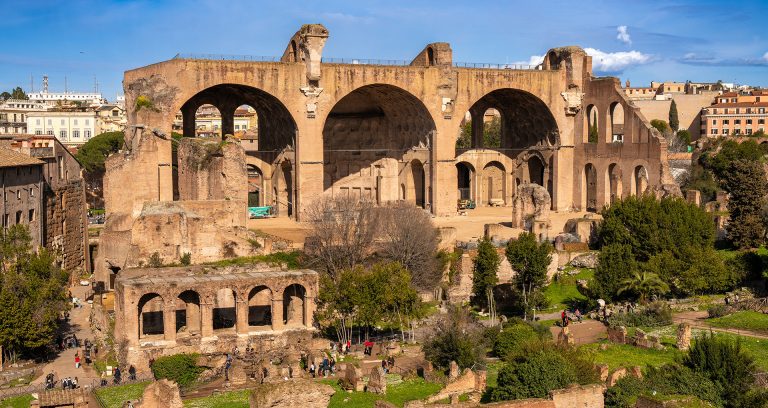
Palatine Hill
Palatine Hill is the legendary birthplace of Rome and one of its most ancient parts. It’s where Romulus is said to have founded the city in 753 BC. This peaceful hill offers incredible views over the Roman Forum and Circus Maximus. Walking here feels like stepping back in time, surrounded by imperial ruins. You can explore the remains of Emperor Augustus’s palace and other noble homes. The lush gardens and ancient architecture make it a calm retreat from the crowds. Archaeological finds here date back to prehistoric times. Entry is included in the same ticket as the Colosseum and Forum. There are informative signs throughout, but guided tours offer deeper insights.
Bring water and take your time to soak in the atmosphere.
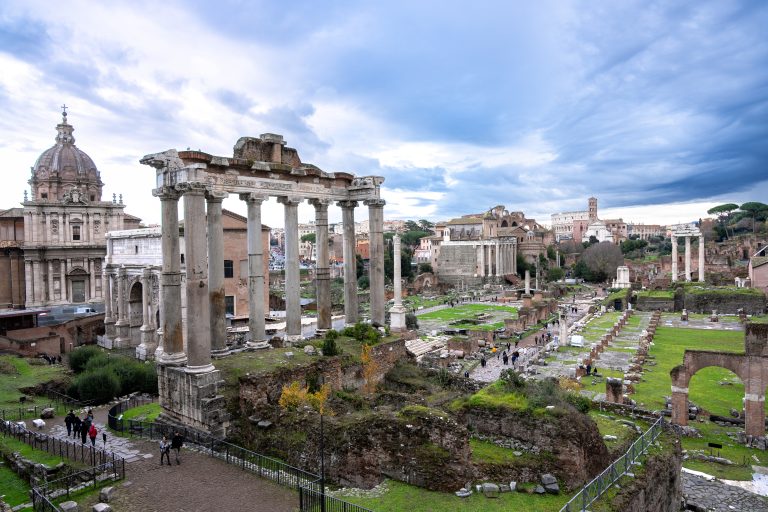
Roman Forum
The Roman Forum was the heart of ancient Rome’s public life. It served as a political, commercial, and religious center for centuries. You’ll see temples, basilicas, and arches that once bustled with Roman citizens. Don’t miss the Arch of Septimius Severus and the Temple of Saturn. The Via Sacra, the Forum’s main road, hosted military parades and ceremonies.
Standing among the ruins, you can imagine senators debating laws and emperors speaking to the people. A guide or audio tour is very helpful to understand the complex layout. The Forum connects to both the Palatine Hill and the Colosseum. It’s best visited in the morning to avoid the midday heat.
Be sure to look out for ancient inscriptions carved in Latin.
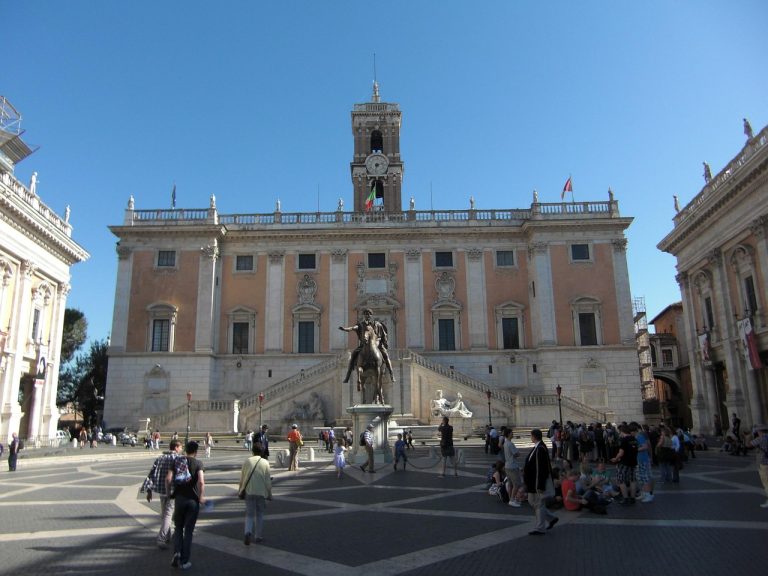
Piazza del Campidoglio / Capitoline Museums
This elegant square was designed by Michelangelo during the Renaissance. It sits atop Capitoline Hill, one of the seven historic hills of Rome. At its center stands the statue of Marcus Aurelius, a Roman emperor and philosopher. The surrounding buildings house the Capitoline Museums, rich in classical art. Inside, you’ll find sculptures, frescoes, and artifacts from ancient Rome. Highlights include the original bronze she-wolf statue and the colossal head of Constantine. The museums are not too crowded and offer an intimate cultural experience. From the back terrace, you get a beautiful panoramic view of the Roman Forum. The square is a lovely place to rest and take in the harmony of Renaissance architecture.
It’s a perfect mix of ancient and modern Rome in one spot.

Piazza Venezia / Victor Emmanuel II Monument
This bustling piazza lies at the foot of Capitoline Hill and is a major Roman crossroads. Its main highlight is the massive white marble monument to Victor Emmanuel II, Italy’s first king. Nicknamed the “Wedding Cake” or “Typewriter,” it’s hard to miss! The structure honors Italian unification and is topped with majestic statues of horses and goddesses. Inside is the Tomb of the Unknown Soldier, guarded by eternal flames. You can climb to the rooftop terrace for sweeping views over Rome. Nearby, you’ll find Trajan’s Column and the historic Palazzo Venezia. The piazza is always full of life, with cars, tourists, and locals passing through.
It’s a great spot for photos, especially around sunset.
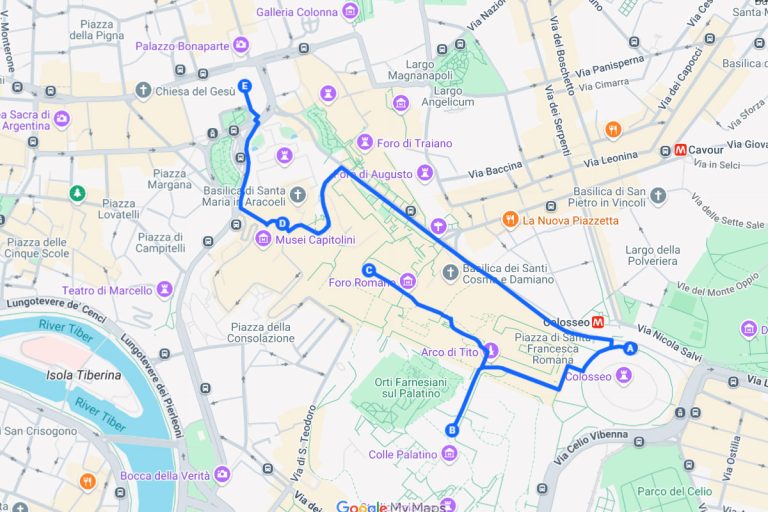
Day 2 – The Vatican
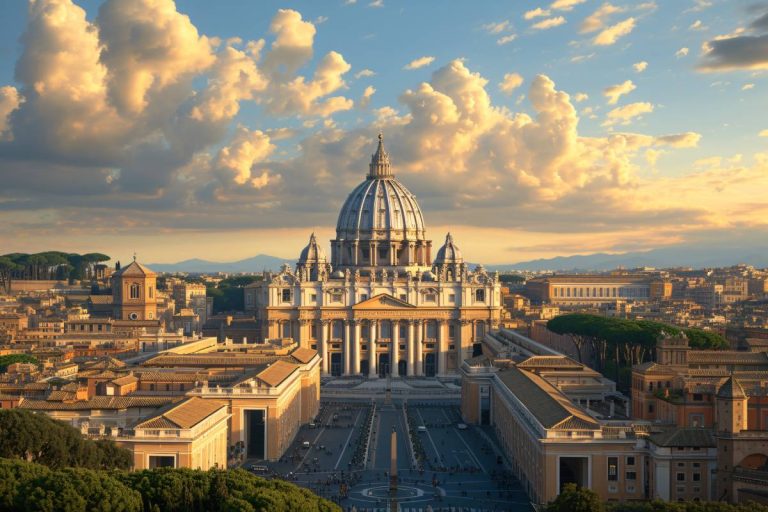
Vatican Museums and Sistine Chapel
The Vatican Museums are among the most visited museums in the world. They house centuries of priceless art collected by the Catholic Church. The highlight is Michelangelo’s breathtaking Sistine Chapel ceiling. You’ll also find masterpieces by Raphael, Leonardo da Vinci, and Caravaggio. Don’t miss the Gallery of Maps and the Spiral Staircase. The museums are vast, so allocate at least 2–3 hours for your visit. It’s strongly recommended to book tickets online to skip long lines. Audio guides or guided tours make the experience more enriching. Dress modestly, as it’s part of a religious site.
You’ll leave inspired by the beauty, history, and spiritual energy of the place.
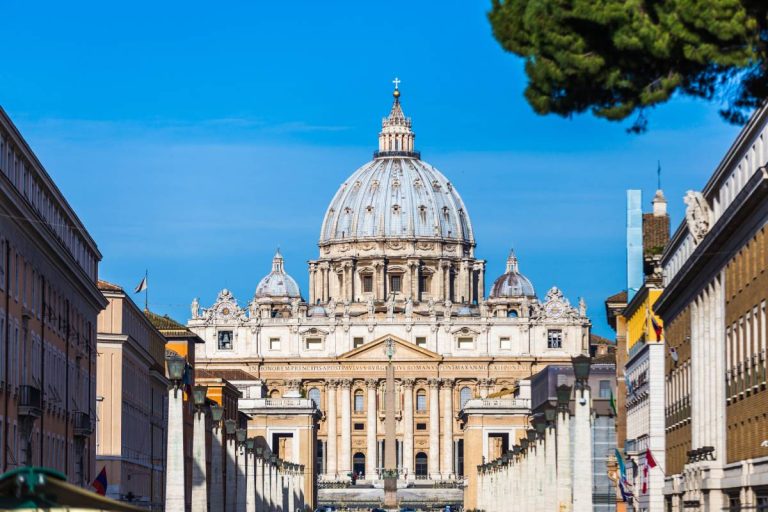
St. Peter’s Basilica
St. Peter’s Basilica is the largest and most important church in Christianity. It stands on the site where Saint Peter, the first pope, is believed to be buried. The interior is grand, with towering columns, marble sculptures, and golden light. Michelangelo’s Pietà and the massive dome are must-see highlights. You can climb the dome for panoramic views over Vatican City and Rome. The entrance is free, but expect a queue and airport-style security. Masses are regularly held, adding a spiritual element to the visit. Photography is allowed, but flash and tripods are not. Respectful behavior and modest dress are required inside.
At sunset, the façade glows beautifully in the golden light.
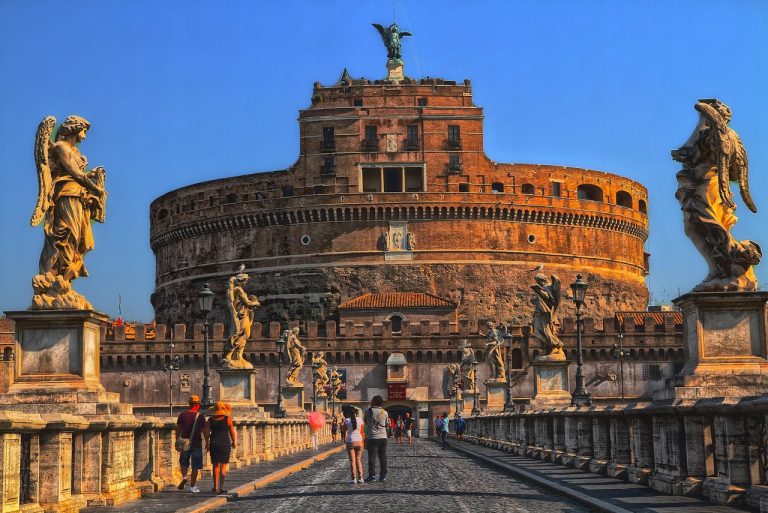
Castel Sant’Angelo
Castel Sant’Angelo is a majestic fortress just a short walk from the Vatican. Originally built as Emperor Hadrian’s mausoleum in the 2nd century AD. It later became a papal residence, prison, and military stronghold. The spiraling ramp inside leads to rooms filled with Renaissance art and history. From the rooftop, you’ll get stunning views of the Tiber River and St. Peter’s dome. The statue of the Archangel Michael on top symbolizes its name. It’s an atmospheric and less crowded alternative to bigger tourist sites. At night, it’s beautifully illuminated and feels truly magical. The bridge leading to it, Ponte Sant’Angelo, is lined with angel statues.
It’s a must for lovers of history, architecture, and photography.
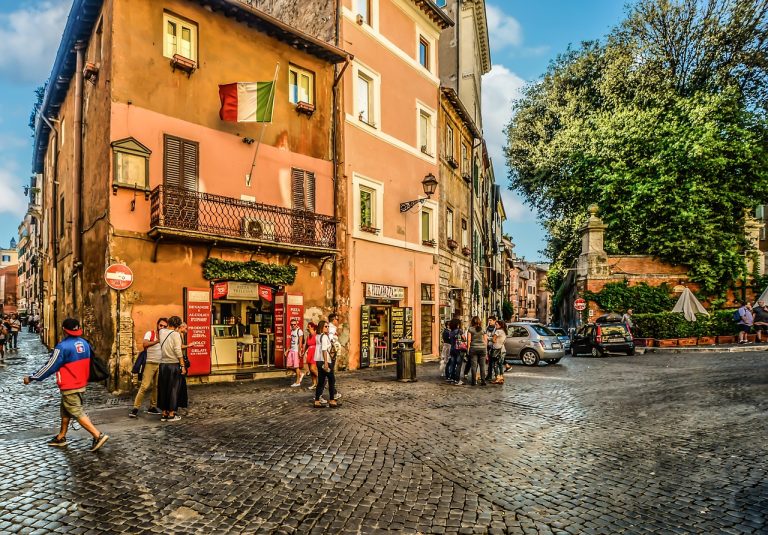
Trastevere district
Trastevere is one of Rome’s most charming and authentic neighborhoods. Its name means “across the Tiber,” and it’s full of winding cobblestone streets. You’ll find colorful buildings, flowered balconies, and hidden courtyards. This is the perfect place to experience local Roman life and cuisine. By day, visit churches like Santa Maria in Trastevere with its golden mosaics. By night, enjoy lively piazzas, street musicians, and traditional trattorias. It’s ideal for dinner after a long day of sightseeing in the Vatican area. Try Roman specialties like carbonara, artichokes, or saltimbocca. It’s also a great area for gelato and aperitivo culture.
Just wander and get lost—it’s all part of the Trastevere magic.
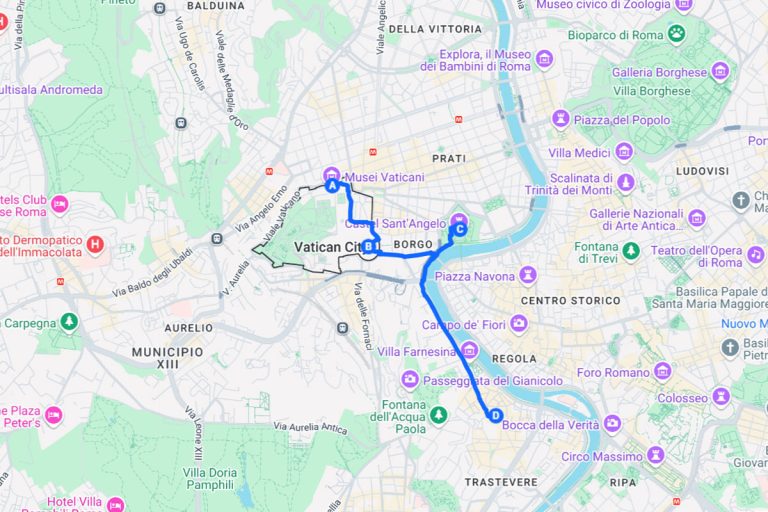
Day 3 – The historical center
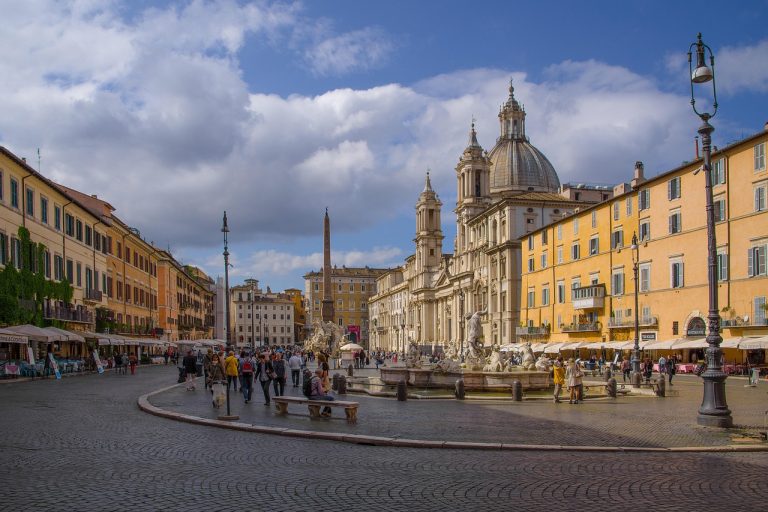
Piazza Navona
Piazza Navona is one of the most beautiful and lively squares in Rome. It was built on the site of an ancient Roman stadium, hence its oval shape. The centerpiece is Bernini’s stunning Fountain of the Four Rivers. You’ll also see two other beautiful fountains and the baroque church of Sant’Agnese in Agone. Street artists, painters, and musicians bring the piazza to life every day. Cafés and restaurants around the square are perfect for a coffee or aperitivo. The piazza is especially romantic at sunset or at night under the lights. You can also admire local crafts and occasional seasonal markets. It’s a great place to sit, relax, and people-watch.
From here, you can walk to many other key attractions in just minutes.
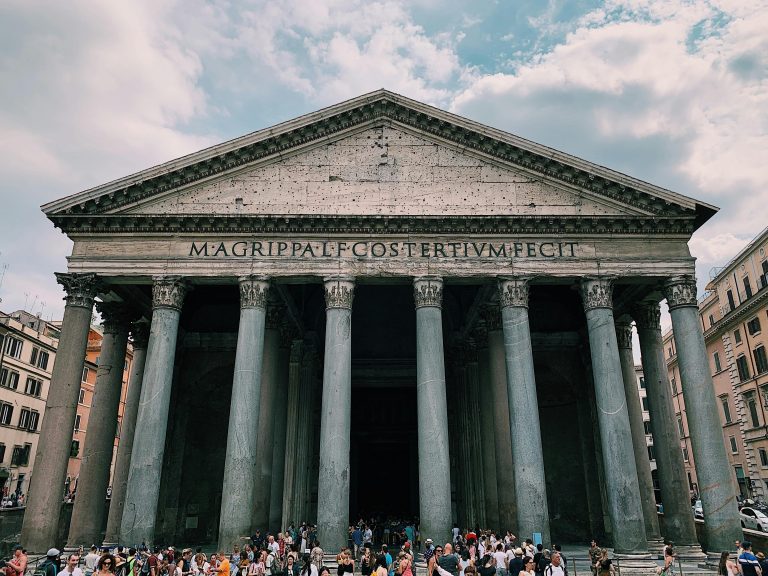
Pantheon
The Pantheon is one of the best-preserved monuments of Ancient Rome. Originally a pagan temple, it was later converted into a Christian church. Its massive dome, with the oculus in the center, is a true engineering marvel. Light from the oculus creates a mystical atmosphere inside. The building houses the tombs of famous figures like Raphael and King Victor Emmanuel II. The entrance is now ticketed, but the price is modest and well worth it. It’s an inspiring place that blends ancient and religious history. Don’t forget to admire the bronze doors—they’re original from Roman times. The square outside, Piazza della Rotonda, is full of energy and charm.
It’s a must-see for anyone interested in Roman architecture and legacy.

Trevi Fountain
The Trevi Fountain is the most famous fountain in the world. This baroque masterpiece features Neptune riding a shell-shaped chariot pulled by sea horses. Legend says if you toss a coin over your left shoulder, you’ll return to Rome. Each day, thousands of visitors gather to make wishes and take photos. The fountain is especially enchanting at night when beautifully lit. Despite the crowds, it remains one of the most magical spots in the city. It was featured in classic films like *La Dolce Vita*. Be mindful of pickpockets, as it’s a busy tourist zone. Nearby streets are perfect for grabbing a gelato or souvenir.
It’s a place of romance, tradition, and sparkling water!
Via Condotti
Via Condotti is Rome’s most elegant and luxurious shopping street. Located near the Spanish Steps, it’s home to high-end brands like Gucci, Prada, and Bulgari. The street itself is beautifully paved and full of historic charm. Even if you’re not shopping, window-shopping here is a delight. You’ll see well-dressed locals and international fashion lovers strolling by. Many of the shops have been in the same families for generations. It’s a great spot to experience Rome’s fashion culture and design heritage.You can also find upscale cafés for a stylish coffee break. The view down the street toward the Spanish Steps is iconic.
It perfectly captures the blend of history and modern elegance.
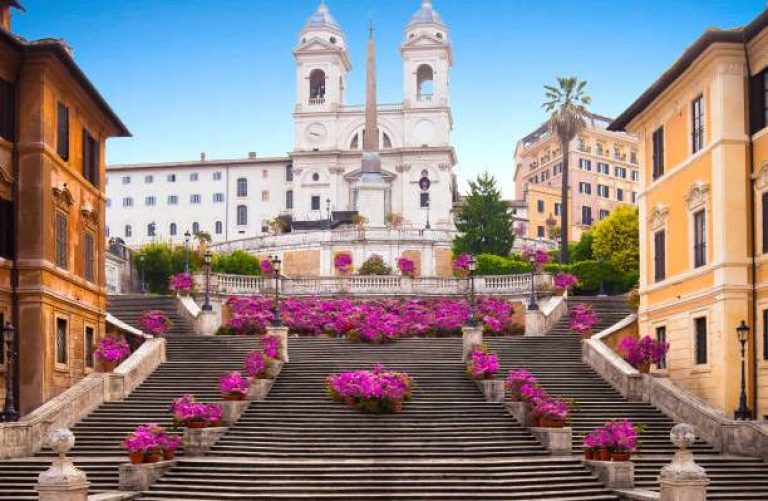
Piazza di Spagna
Piazza di Spagna is famous for the Spanish Steps, a grand staircase of 135 steps. It’s a popular meeting point for both tourists and Romans. At the base, you’ll find the Barcaccia Fountain, sculpted by Bernini’s father. Climb to the top for a lovely view of Rome’s rooftops and domes. The steps are especially beautiful in spring when decorated with flowers. Nearby, you’ll find elegant streets full of boutiques, cafés, and art galleries. It’s a great place to take a break and people-watch. Artists often paint portraits here, adding to the bohemian feel. The surrounding area is rich in history, including Keats’ house-museum.
It’s one of the most photogenic and romantic corners of the city.

Villa Borghese
Villa Borghese is Rome’s most famous park and a peaceful escape from the city bustle. It’s filled with gardens, fountains, sculptures, and charming walking paths. At its heart is the Galleria Borghese, which houses artworks by Caravaggio, Bernini, and Canova. You can rent bikes or pedal-powered carts to explore the park in fun ways. There’s a lake with rowboats and a temple in the middle, perfect for photos. The Pincian Terrace offers one of the best panoramic views over Piazza del Popolo. It’s a great place for a picnic, a jog, or a quiet rest among trees. Families, couples, and solo travelers all love spending time here. There are also cafés and ice cream stands scattered through the park.
Villa Borghese is the perfect final stop for a relaxed and scenic end to your trip.
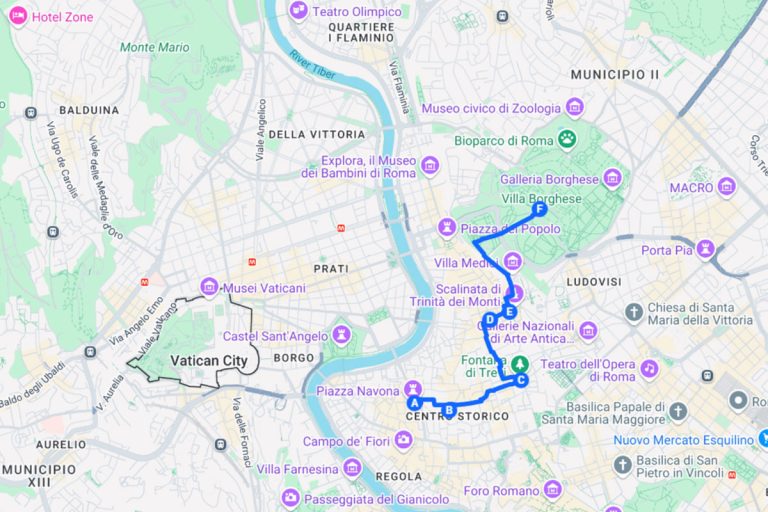


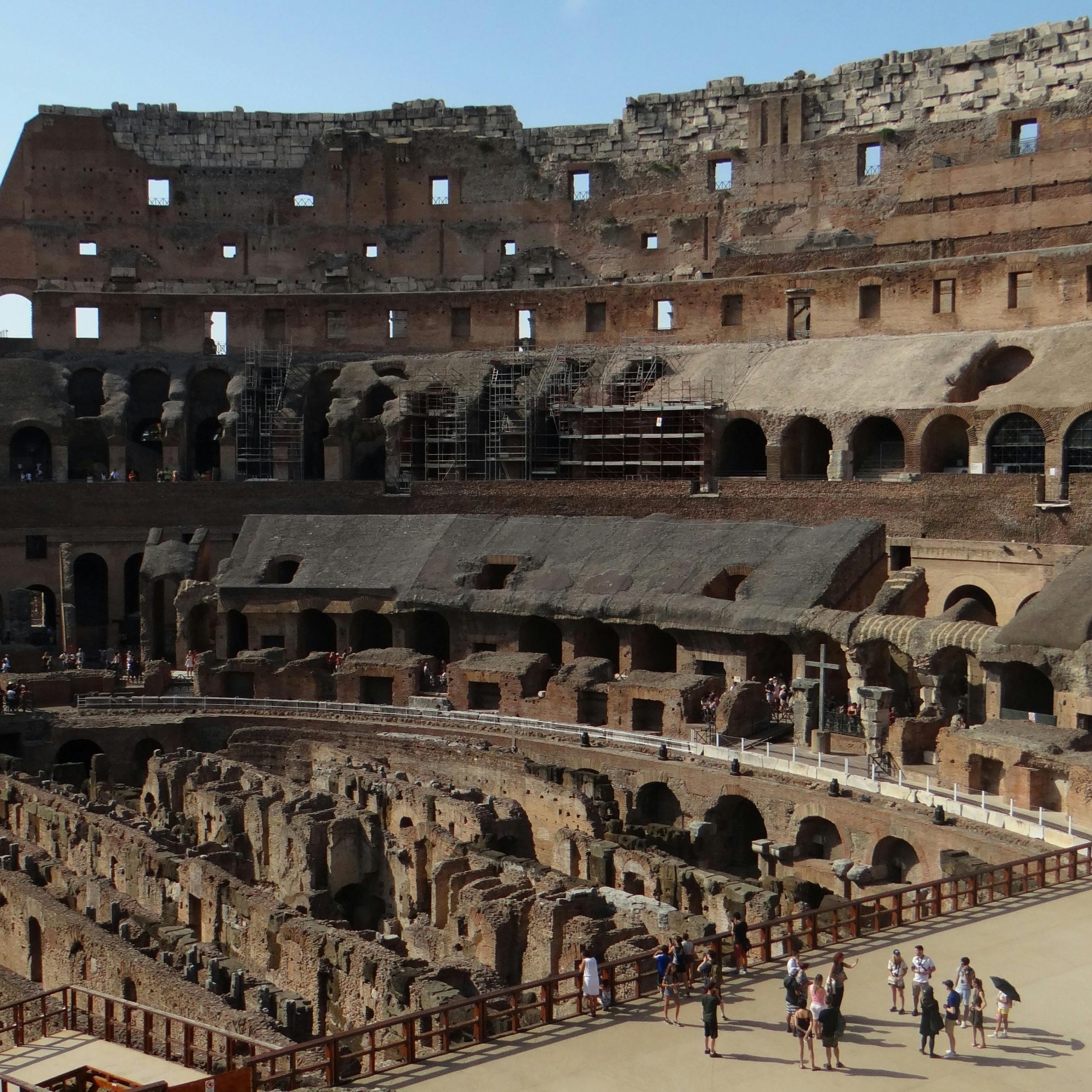
0 Comment